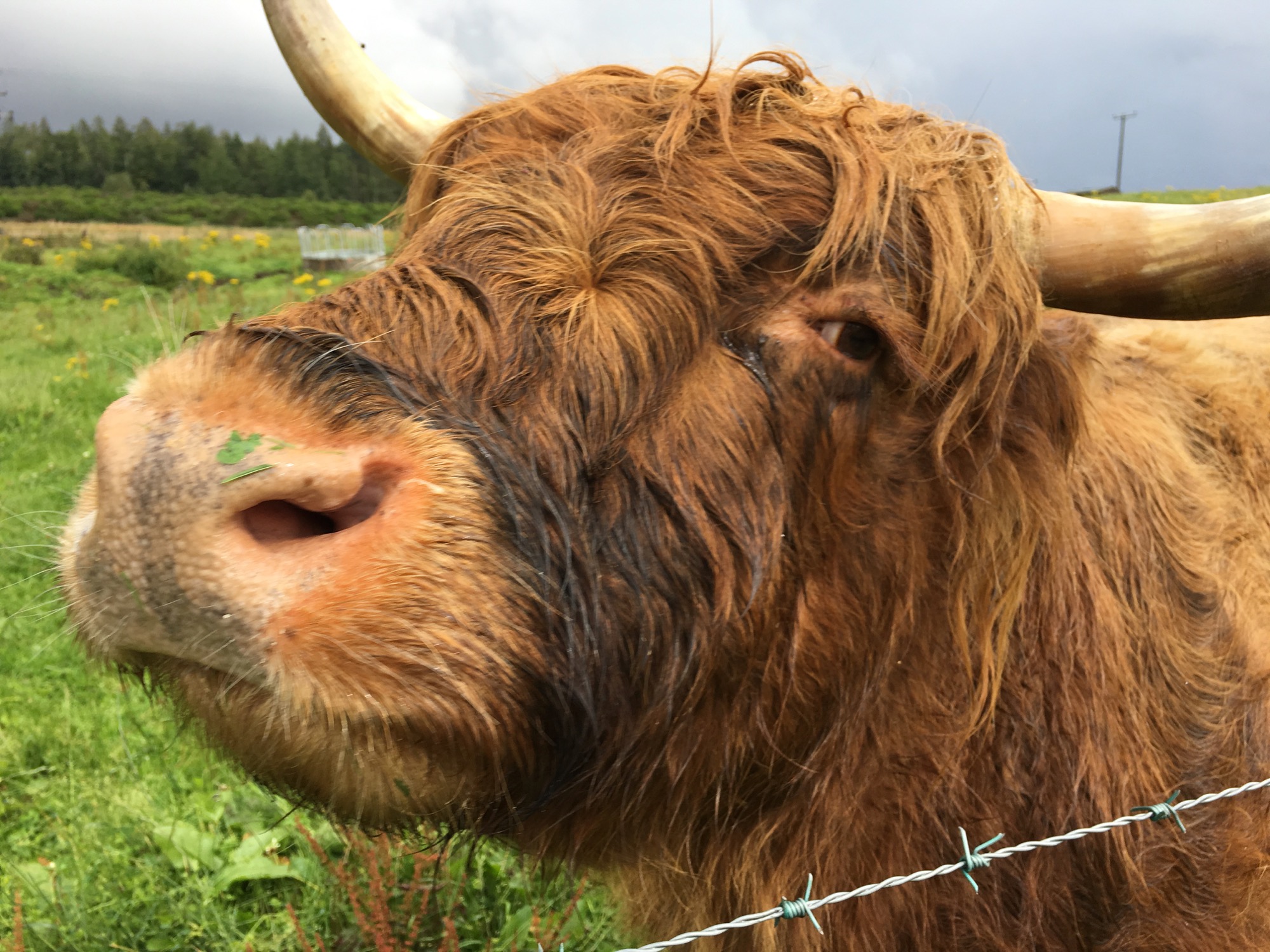“Back o’nine,” we’re told. “Be ready. I wouldn’t be late.” I believed him. Our tour guide, Paul, hadn’t been late yet and I didn’t expect he would start now.
“Back o’ nine,” a Scot’s way of saying quarter after nine, was the starting time each morning since we’d arrived in Scotland to tour the Highlands. It was a reasonable time to start our busy days but still, someone in our small group of three, was inevitably just arriving as Paul pulled into the hotel’s parking lot, always before the back o’nine.
There was no fear of that being me, however. I was always awake by 5 AM. It wasn’t the jet lag that woke me early. It wasn’t the habit of an early riser that made sleeping in impossible. It was simply the anticipation of getting back out there, into the country, meeting the people, tasting the whisky, exploring an abandoned castle, or a centuries old graveyard, or walking the ground of a historic battle.
From the first day, I was hooked. It seems you can’t throw a pebble in Scotland without hitting something remarkable, or stunning, or inspiring, or historic. The distilleries are both ancient and modern; some started in the 1800s, others finished just yesterday. The towns are full to bursting with energy. Structures old and new, some all glass and shiny metal and others black with age. There are old stone houses where generations of families have raised countless children and dusty antique shops; touristy stores filled with tartan handbags and hats, mittens and scarves; fancy whisky shops where you can spend more than a month’s salary on a bottle of old whisky and tiny, dark pubs, where bottles and bottles of whisky fill the wall behind the bar. Impressed by one collection, I asked how many different types of whisky I could order. The barkeep gave me a sad half smile and a wink. “Just say what ya like and I’m sure I can find ya something” he said.
Although the towns are where you’ll find the head and hands of Scotland, it is in the countryside that you’ll find it’s heart. The landscape we pass ranges from golden, flat fields that slowly, mile upon mile, roll and undulate up into the rugged highlands. It is in the highlands that you’ll find peace and quiet, only broken by the sound of crashing waterfalls that course down the mountainsides, the icy cold water making its way to the pure lakes that line the valleys’ bottoms.
Fast and slow running streams are everywhere. Some are crystal clear as ice but most are dark amber, like strong tea or old whisky, coloured by the peaty soil that is found across the Scottish land. In some peat fields, archaeologists have found mummified humans believed by some to have been sacrificed by Druids, while others say they have been buried this way out of honour and respect.
Puffy white sheep dot the green land, eating, always eating. Sometimes a field holds shaggy brown cows who, we discover, will amble over to take some sweet biscuits from our hands. I see a portly hedgehog waddle across the road, while rabbits dart with purpose, quick to get out of our way.
One day we visit the town of St. Andrews. The busy town is butted up against the cold waters of the North Sea, the streets busy with students returning to university or golfers come to play on the historic golf courses just down the way. Here we find an ancient Catholic cathedral, torn apart, stone by stone, by angry Protestants in 1559. Being a frugal people, the stones didn’t go to waste but were recycled to build a sea wall in the harbour, protecting the village from North Sea storms.
We venture into a grave site on another sun-filled day. Old tombstones lie like broken teeth on the grass, the names meant to be marked and remembered worn off by centuries of rain and sun and wind. A tall stone tower stands against the sun off in one corner. It’s believed to have been built by the Pictish people but no one knows why or for what purpose. I am surprised to find fresh flowers laid on a gravestone, the name long lost to time but not forgotten to someone.
Some days are rainy and grey. “A dreich day,” the Scots say. Miserable weather to some but not to a Scot. Despite the rain or the cold wind or the dark skies, I never heard anyone complain. I wonder if perhaps it’s the warmth of a morning porridge or a toasty haggis roll that sets things right for the day.
No matter the weather, we spend hours touring distilleries and tasting their wares. We sample as much as we can – some from tiny distillers who produce only a few hundred bottles a year but also some from the large, commercial manufacturers who pump out thousands and thousands of bottles to be shipped around the world. No matter where it’s from, I know that we’ll mourn the loss of it when we return home.
We’d come from Canada to make a 50th birthday memorable. “Show us the country,” we’d said. “Let us enjoy some whisky and throw in some history between glasses. That’ll do us fine.”
We did better than fine and I can’t wait to return. Sue Pollock, Canada – August 2019

